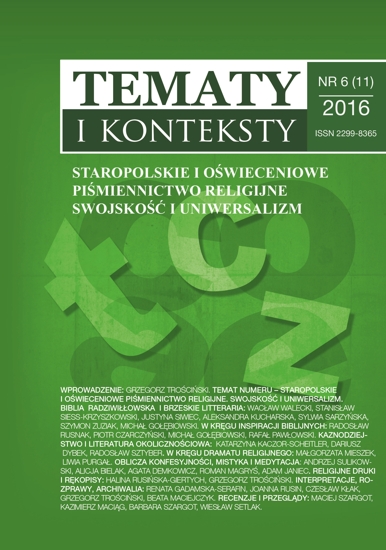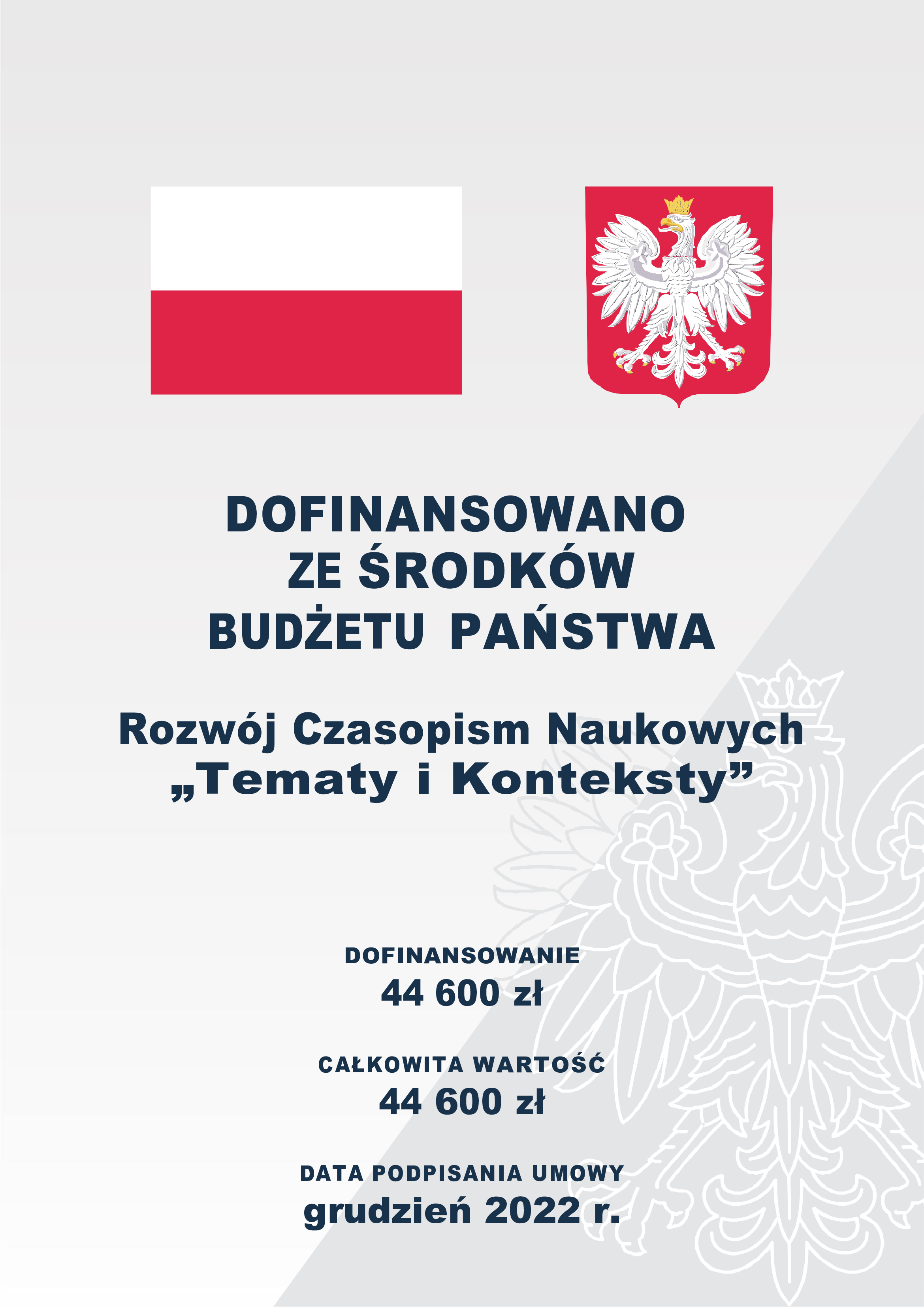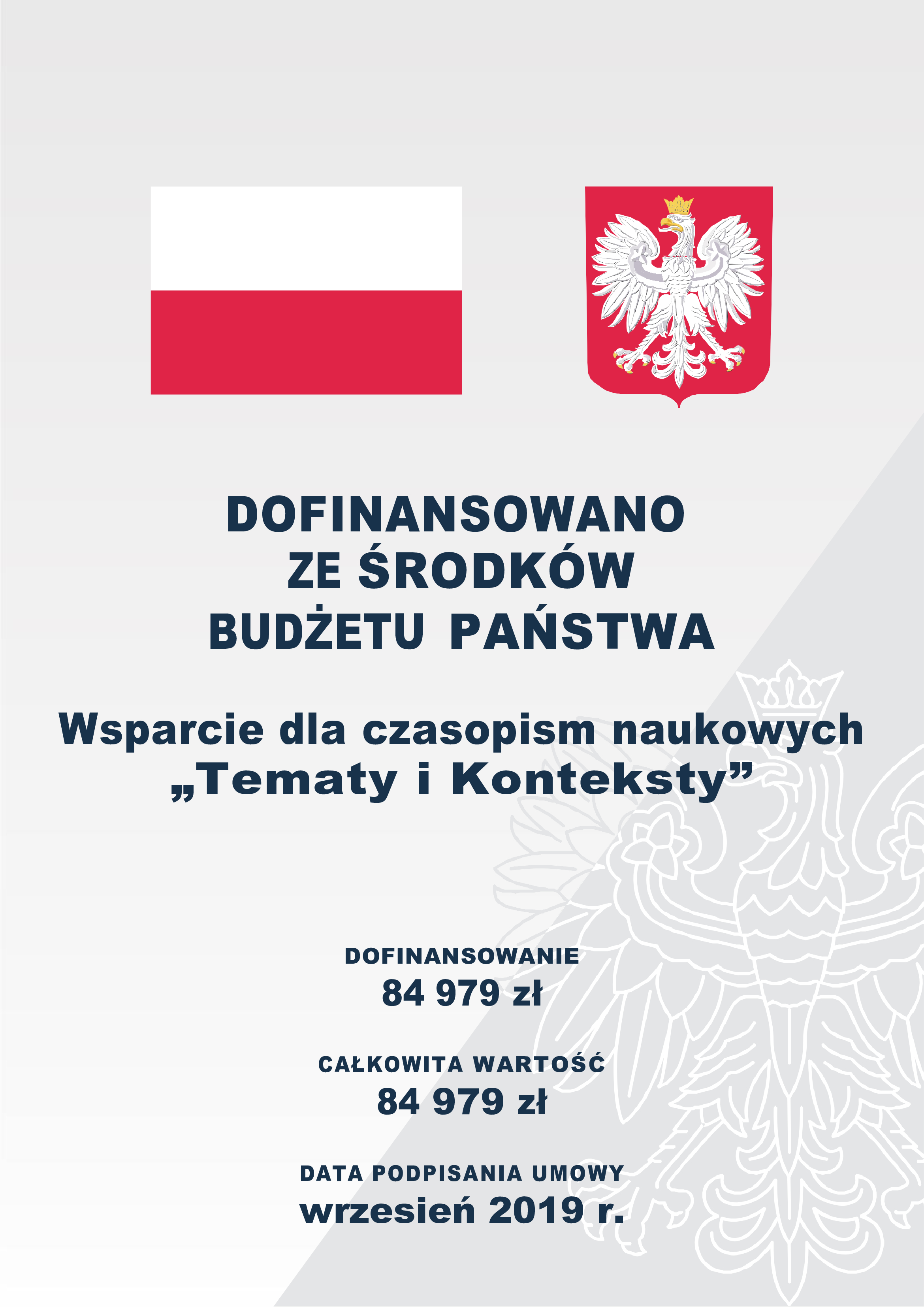Taniec na Golgocie w medytacyjnym zbiorze Plęsy Jezusa z aniołami Marcina Hińczy
Słowa kluczowe:
medytacja, jezuici, Marcin Hińcza, taniec, imitatio Christi, Ignacy LoyolaAbstrakt
The aim of the article is to present the 17th-century meditations of Jesuit Marcin Hińcza entitled Plęsy Jezusa z aniołami [Jesus Dancing with Angels] in the context of Ignatius of Loyola’s meditation method and the main topic of the work which is the cosmic dance. Hińcza used the dance metaphor in quite the paradoxical way, because as opposed to the moralistic writings of his times he didn’t criticise it but rather applied to explain allegorically God’s plan on earth and the idea of imitatio Christi. In the title of his work Hińcza used the word “pląs” which in Polish means: dancing, jumping, applauding and also triumphing. This variety of significations served the autor to present the cosmic meaning of Christ’s “dance”. In Plęsy Jezusa z aniołami Jesus has “jumped” from heavens to the womb of Virgin Mary, then he “jumped out” to the earth to run it around (as Logos), next He “jumped” upon the cross on Calvary and triumphantly made his last “jump” back to Heavens. According to the meditative idea of imitatio worshippers should imitate the angels in supporting the Saviour in his “leaps”. The interpretational background of the article are the New Testament apocrypha and the Church Fathers’ writings.
Downloads
Pobrania
Opublikowane
Jak cytować
Numer
Dział
Licencja
Prawa autorskie (c) 2016 Tematy i Konteksty

Utwór dostępny jest na licencji Creative Commons Uznanie autorstwa – Użycie niekomercyjne – Bez utworów zależnych 4.0 Międzynarodowe.




